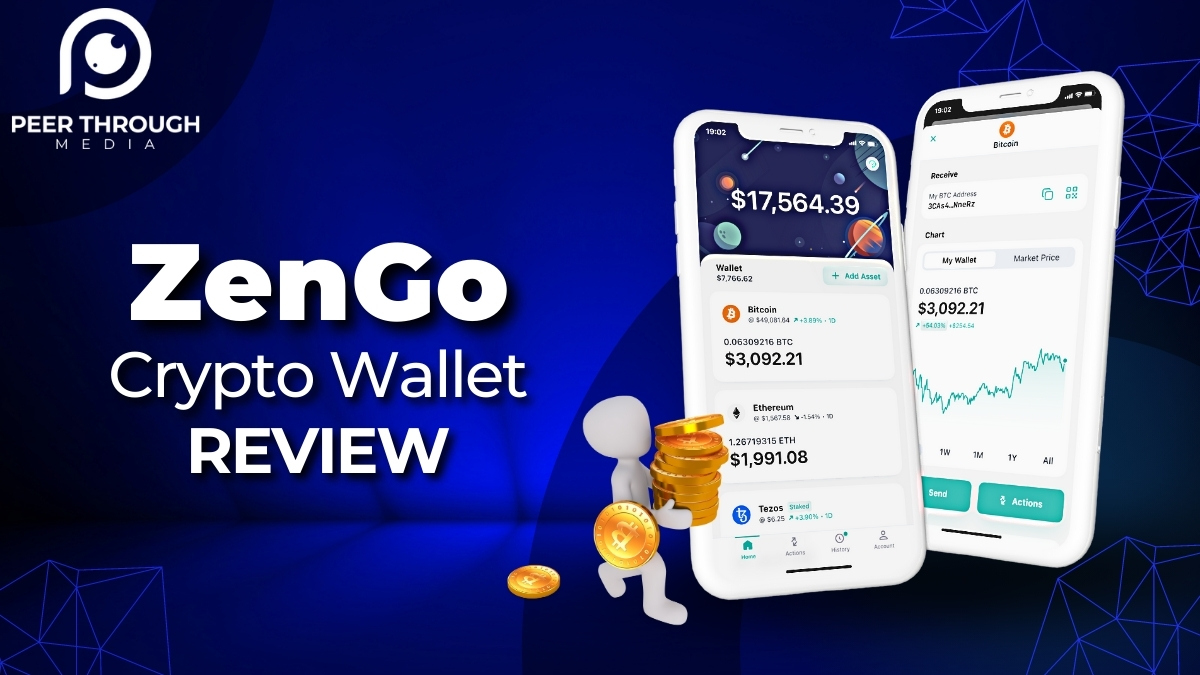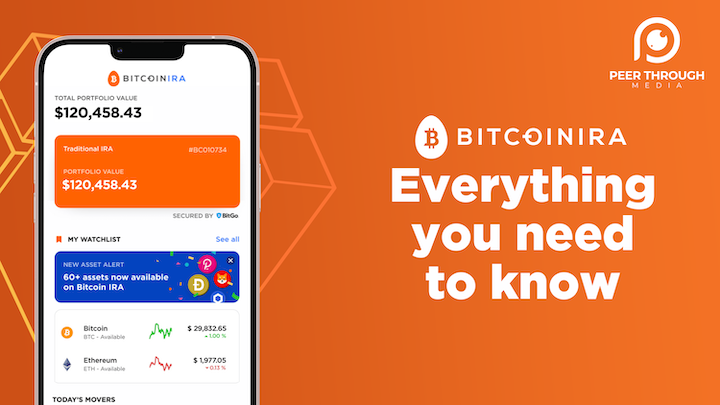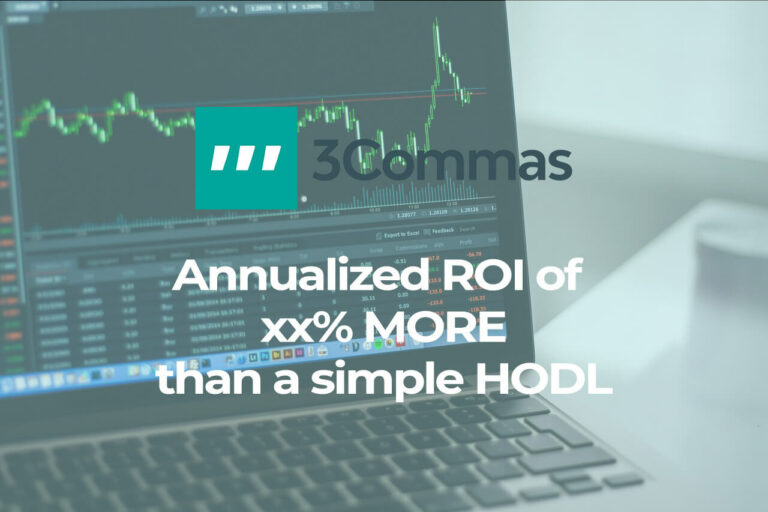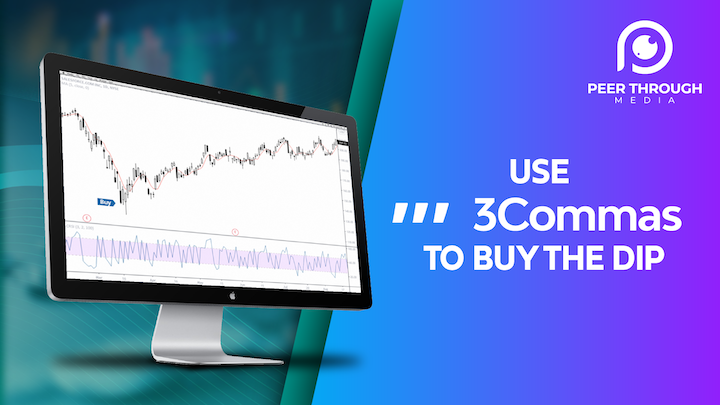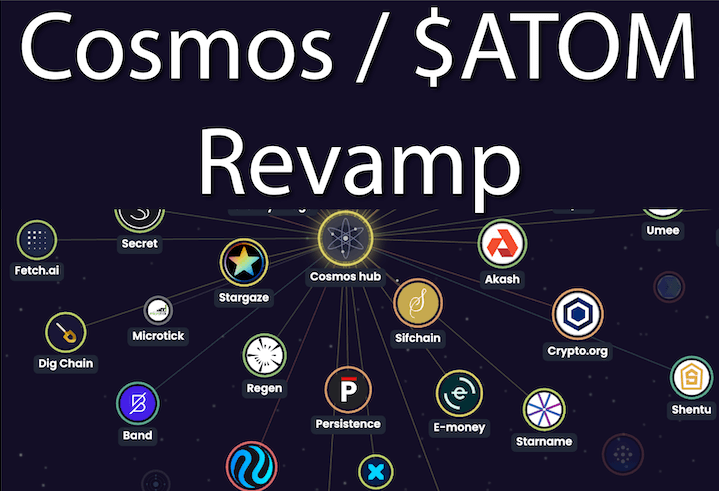ZenGo Wallet Review: Is ZenGo Crypto Wallet Safe [2022]
The main concern that occupies every crypto holder’s mind is keeping their assets safe. Given the current FTX debacle, let’s first completely rule out custodial cryptocurrency wallets and centralized exchanges as long-term cryptocurrency storage options.
Outside of that, the most popular storage options include custodial wallets, particularly hardware crypto wallets, most of which use a private key and seed phrase. However, with multiple options to choose from, it sometimes becomes difficult to understand what actually is the safest way to store your crypto.
In this ZenGo wallet review, we discuss a new type of cryptocurrency wallet that uses a different type of self-custodial technology called, Multi-party Computation (MPC). MPC is a technology that has been around since the 70s, and MPC is used by companies like Fireblocks as a custodial storage solution for large enterprises.
ZenGo is a consumer facing wallet app that puts the power of MPC cryptography technology in the hands of the everyday Chad. Sounded interesting, so I had the pleasure of speaking to someone at the company where I asked them all sorts of questions and hypothetical scenarios so that I could see how their wallet compares to the other hardware wallets present in the web 3 world.
ZenGo Summary
ZenGo Quick Take
ZenGo is a self-custody crypto wallet that takes a unique approach to self-custody. By using something called MPC technology, it enables users to have complete custody of their own coins, removes the need for a seed phrase which is a single point of vulnerability for a wallet, and enables a level of “wallet recovery” should you lose access to the physical device (your phone) that holds your wallet.
After speaking for 45 minutes with ZenGo (see podcast below) here’s my attempt to sum everything up via a list of pros and cons.
Overall
-
Ease of Use
-
Security
-
Price
Pros
- The wallet is self-custody. Like metamask or Ledger, but unlike a Coinbase, ZenGo can not access your funds.
- ZenGo has set up an interesting 3 factor recovery system that makes a wallet recoverable, without giving any one else (but you) access to your funds.
- ZenGo is mobile first and more user friendly/Web2 familiar than a Ledger or other hardware wallet
- ZenGo has “clearsign” in place that does a better job than other wallets to help protect you against signing a malicious transaction. (Still on you though of course if you sign that fake free mint contract)
Cons
- Your crypto is stored on your phone. If someone gains access to your phone through your password, they could send it away.
- The above is no different than the security features of a ledger BUT we use our phones more often and have the physical device more exposed to other people and situations than we do a dedicated Ledger.
ZenGo Review: An Overview
ZenGo is the world’s first keyless mobile cryptocurrency wallet that uses advanced MPC cryptography instead of using a private key. This ensures two things: ease of use and increased security. Unlike other crypto storages, this wallet keeps two independently created mathematical secret signatures – one that is stored on your mobile device and the other on the ZenGo servers. No transaction can be initiated if both server and your device do not communicate to sign it.
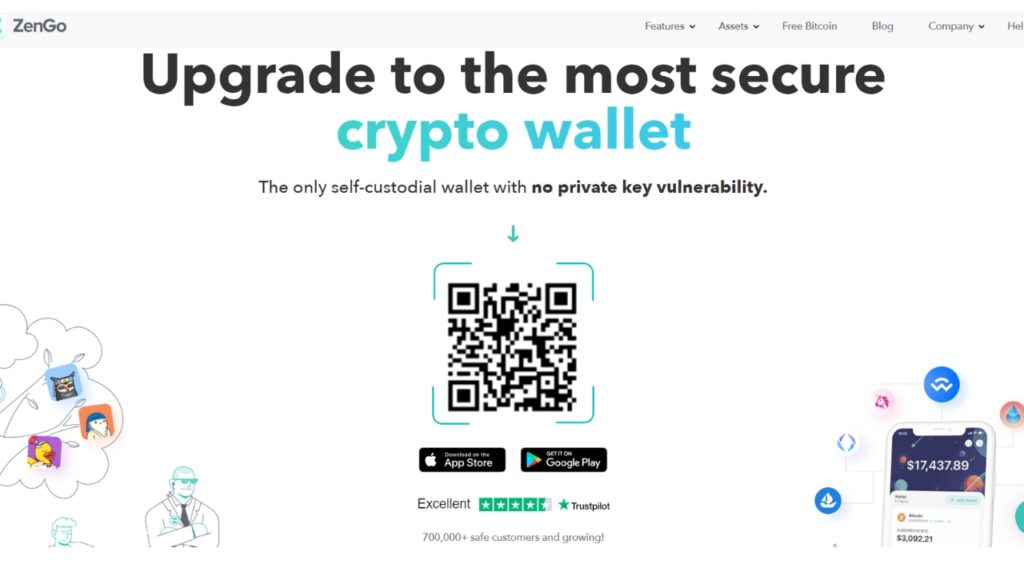
The problem with using traditional crypto wallets (custodial) is that you do not hold your crypto assets. Exchanges do that for you, which means your private key vulnerability is that your funds may get compromised if the exchange system is hacked or if the exchange decides not to play honest and lends out your crypto funds on the back end. (We’re looking at you SBF!)
A possible solution to this is a non-custodial wallet like metamask where only you get full control of your coins. Then you pair that with a hardware wallet for increased security. But doing this implies that you are solely responsible for your assets and may permanently lose access to them if you lose your private key or seed phrase. No one can steal from you, but no one can help you recover. That’s a trade-off that the Zengo wallet aims to solve.
Zengo Wallet – Self-Custody Without Private Keys?
ZenGo realized this problem of private key vulnerability of getting compromised and came out with a solution – a self-custodial wallet that does not use private keys at all. Instead, it uses a 2 party secret store system (this is MPC). Without getting to technical it needs you to authorize a transaction on your device using face biometrics to access your funds and at the same time their server authorizes the transaction on their device. This ensures you can execute transactions without needing to remember all the private key complexities.
You can directly buy crypto and sell crypto from the keyless mobile wallet with the first transaction as free. Also, sending, storing, and receiving crypto is offered free of charge (no network fee or processing fee), with no minimum and maximum limits. These are ZenGo fees: local currency conversion fee, Gateway fee, processing fee, spread and network fees which apply for selling, buying, or trading services (such fee are charged by every crypto wallet). Zengo supports multichain, so you can trade from 70+ crypto assets and earn interest through staking, lending, or yielding. Additionally, it also supports NFTs, DeFi, and Dapps. There is also a Zengo project going on for a Zengo Crypto debit card (which may become the only self custodial wallet debit card working with MPC technology)
But is this new technology safe to use? Let’s find out.
Is ZenGo Safe?: Here’s the Truth
ZenGo provides you with complete control over your crypto assets without the need to remember any private key or depend upon third-party exchanges. To achieve this, it uses next-gen cryptography technology, where two mathematical secret shares are created with threshold signatures and distributed on your device and their server.
Without having access to your physical device AND compromising ZenGo’s servers at the same time, no one can hack your wallet. Furthermore, the shares are encrypted, meaning no one else can track your transactions, including ZenGo.
The idea of using a face ID identity verification level to access your wallet gives real-time security, and the distribution of the signatures ensures you can recover access to your wallet, even if there’s one point of failure.
ZenGo Uses MPC Over Seed Phrases
Before we discuss this, let’s understand what exactly MPC is. Multi-party computation protocol (MPC) is a cryptography technology where each party (here, your device and ZenGo server) holds secret data to evaluate and execute a transaction without revealing the data to each other. It also means there isn’t a large centralized server that can be hacked or controlled by a nefarious actor. If someone hacks the server, they’d also need to hack your phone. This way ZenGo limits hackers from stealing your ZenGo savings.
On top of that, there is a recoverability benefit that goes beyond a private key (more on that later). This multi-factor authentication is beneficial over seed phrases in multiple ways:
- Prevents losing access to your wallet due to loss of seed or recovery phrases
- Keyless usage of the wallet so you do not need to remember complex passwords
- Eliminates the vulnerability of your account to hacking
ZenGo uses this technology to provide added security to your crypto assets while maximizing ease of use.
ZenGo Wallet Review: Pros & Cons
Product Pros
Product Cons
Secure. Simple. All-in-one.
Though all crypto platforms are loaded with security features, users’ crypto holdings getting stolen or lost is getting increasingly common. With centralized services, there is the risk of fraud or a large-scale hack. With self-custody, there is the risk of private key mismanagement.
ZenGo’s idea is to protect users from this data compromise, no matter who’s at fault.
- MPC over single passwords. To prevent unknown access to your accounts and eliminate the need to store seed phrases.
- Passwordless authentications. This ensures ease of use and no compromise of data
- Multi-recovery factors. To ensure you never lose access to your assets
ClearSign: Powerful Web3 Firewall
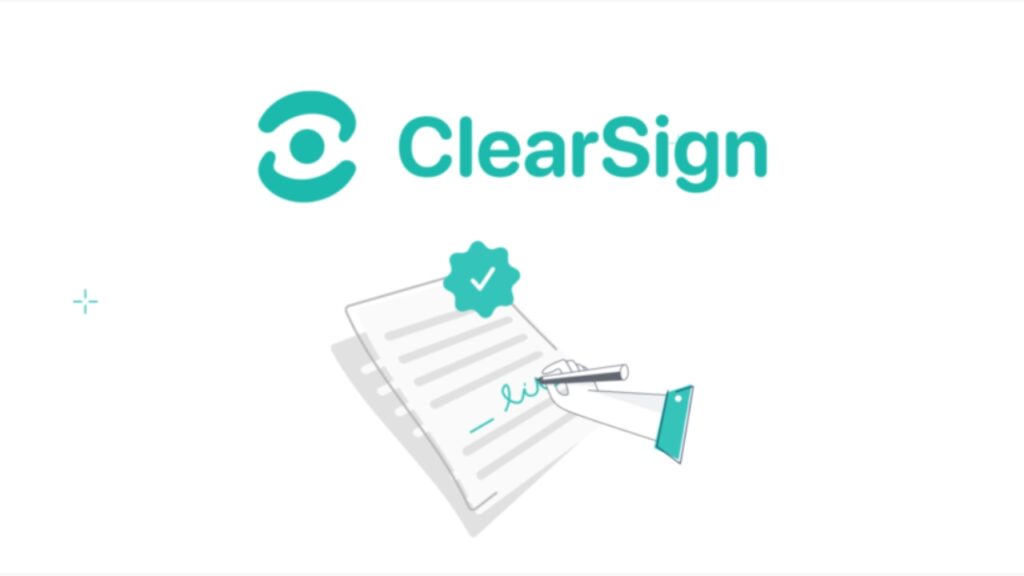
ZenGo has integrated Clearsign – a powerful web3 firewall for securely signing transactions. It analyzes all transactions and blocks unauthorized and unexpected requests through ZenGo’s client-server architecture.
Here’s a brief overview of how ClearSign works:
- Presents a verified message screen that is readable and easy to understand for users to make informed decisions
- Provides informative alerts if you are interacting with a high-risk transaction
- Acts as a firewall by blocking doubtful actions related to supported Dapps
While it isn’t foolproof, and ultimately you as a user have control – Clearsign takes a large step in protecting you from signing that malicious contract that you thought was a free mint, but instead steals all of your NFTs.
No Risk of Private Keys
Ever heard of the term “Not your keys, not your wallet?” ZenGo solves this with MPC wallets that are completely yours but keyless.
With ZenGo, no exchanges own your private keys, which gives you exclusive ownership of your account while you get maximum flexibility to access it without the risk of losing your passcodes or seed phrases. This offers close to bulletproof security.
ZenGo Guarantees Recovery For Lost Crypto
Remember how we told you ZenGo does not have a single point of failure? This next-gen wallet doesn’t use any single key for your account but rather leverages multiple factors which make accessing your account a breeze.
ZenGo uses a 3-factor authentication concept to recover your account at all times: real-time face biometrics that is unique to you, your email account, and a recovery kit that you can store.
The 3 security factors used by ZenGo
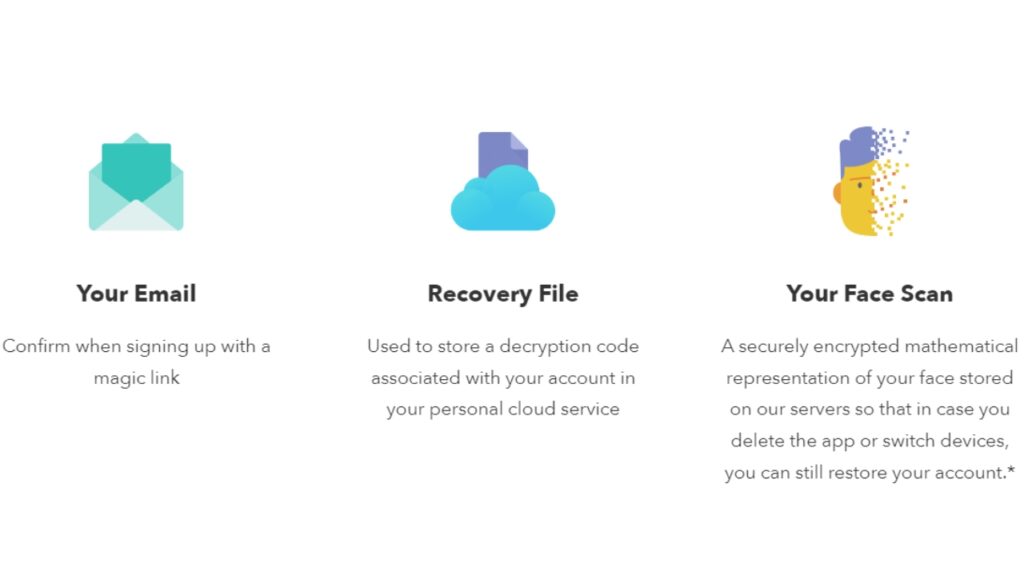
ZenGo offers a 3 Factor Re Authentication system for maximum security and yet the ability to recover your account. This system replaces the need to store seed phrases and helps you recover your account (and funds) in a few simple steps.
Let’s look at each of the steps in detail.
To recover your account, you will need the email that you used to create your ZenGo account for the first time. This is also where your recovery file is backed up by default in case your physical device is lost or stolen. Ensure you are logged into your email account when opting for account recovery.
Facescan
Email alone isn’t strong enough, so ZenGo wallet uses your face to authenticate you anonymously. This process is completely local and private to your phone. It prevents any unknown person from accessing your account and provides complete network security. To facilitate account recovery, you can also add another face scan of a trusted beneficiary.
Recovery File
During wallet creation, you get a unique recovery file that is stored in your default cloud storage. Additionally, you can also sync your recovery file with other cloud services, including Google Drive and Dropbox for iOS or Dropbox for Android. This file is stored only with you; thus, you must have access to it in case your account is lost.
So in short, if you lose your device, rather than re-importing the wallet via a seedphrase you have to: confirm via email, scan your face, and use your recovery kit.
ZenGo Wallet vs. Arculus vs Ledger
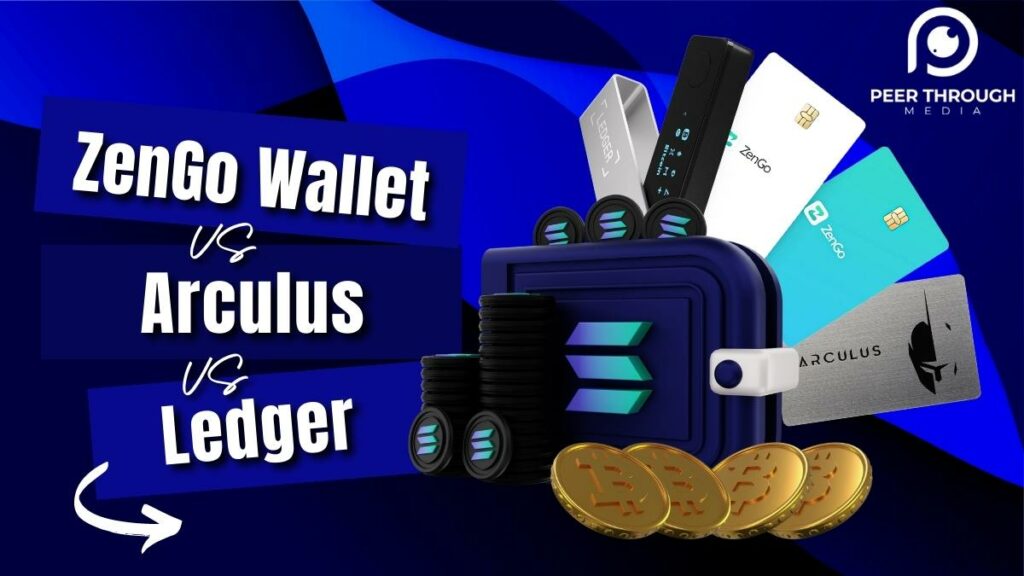
Now that you know about ZenGo and the benefits of using this MPC secure wallet let’s compare it with two other market leaders in the self custody / hardware wallet space – Arculus and Ledger
| Features | ZenGo | Arculus | Ledger |
|---|---|---|---|
| Platforms supported | IoS, Android | On-premise | On-premise |
| Type | Self-custodial MPC wallet | Cold hardware wallet | Cold hardware wallet |
| Customer support | Online, 24/7 live support | Online | Online |
| Base price | Free | $99 | $62.23 |
| Battery required | No | No | Yes |
| Passcode storage | Your device and ZenGo server | Separate from device | On-device |
| Authentication | MPC and face biometrics | Biometric pin, Encrypted NFC connection between the card and phone | Pin & device |
| Restoration | 3FA – email, live face scan, ZenGo server | 12-word seed phrase | 24-word seed phrase |
| Learn More: | Visit ZenGo | Visit Arculus | Visit Ledger |
Conclusion
ZenGo is a new, self-custody, secure crypto wallet, that approaches the custody issue a bit differently than its peers. If you want the ownership of a hardware wallet but do not like the idea of managing private keys, then using the ZenGo secure mobile cryptocurrency wallet is your best bet.
While no security solution is perfect, ZenGo’s next-gen keyless authentication with MPC, face biometrics and other wallet features ensures this wallet remains safe from hackers and even your own mistakes. It is easily recoverable if you lose access to your account and has systems in place to help lessen the chances you sign any unwanted transactions.
ZenGo wallet is great for Crypto beginners and experienced Crypto holders. While I don’t recommend anyone put all their crypto funds in one holding solution, I’m rooting for ZenGo wallet to solve this storage issue. I will open up a wallet to give it a go while holding a section of my crypto and experience one of the most secure crypto wallets out there.
If you want, you can simply scan the QR code below and have real time ZenGo user experience.
Stay safe out there!


